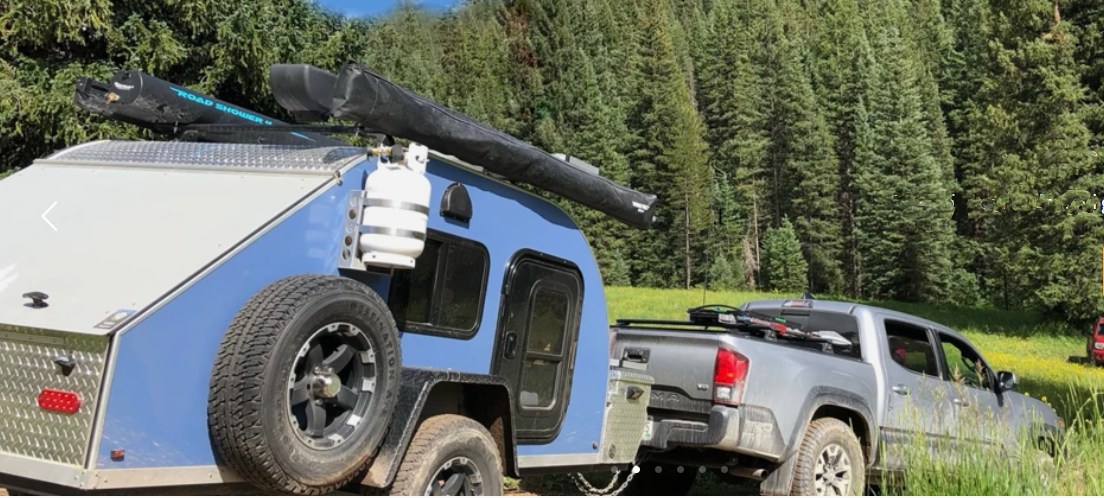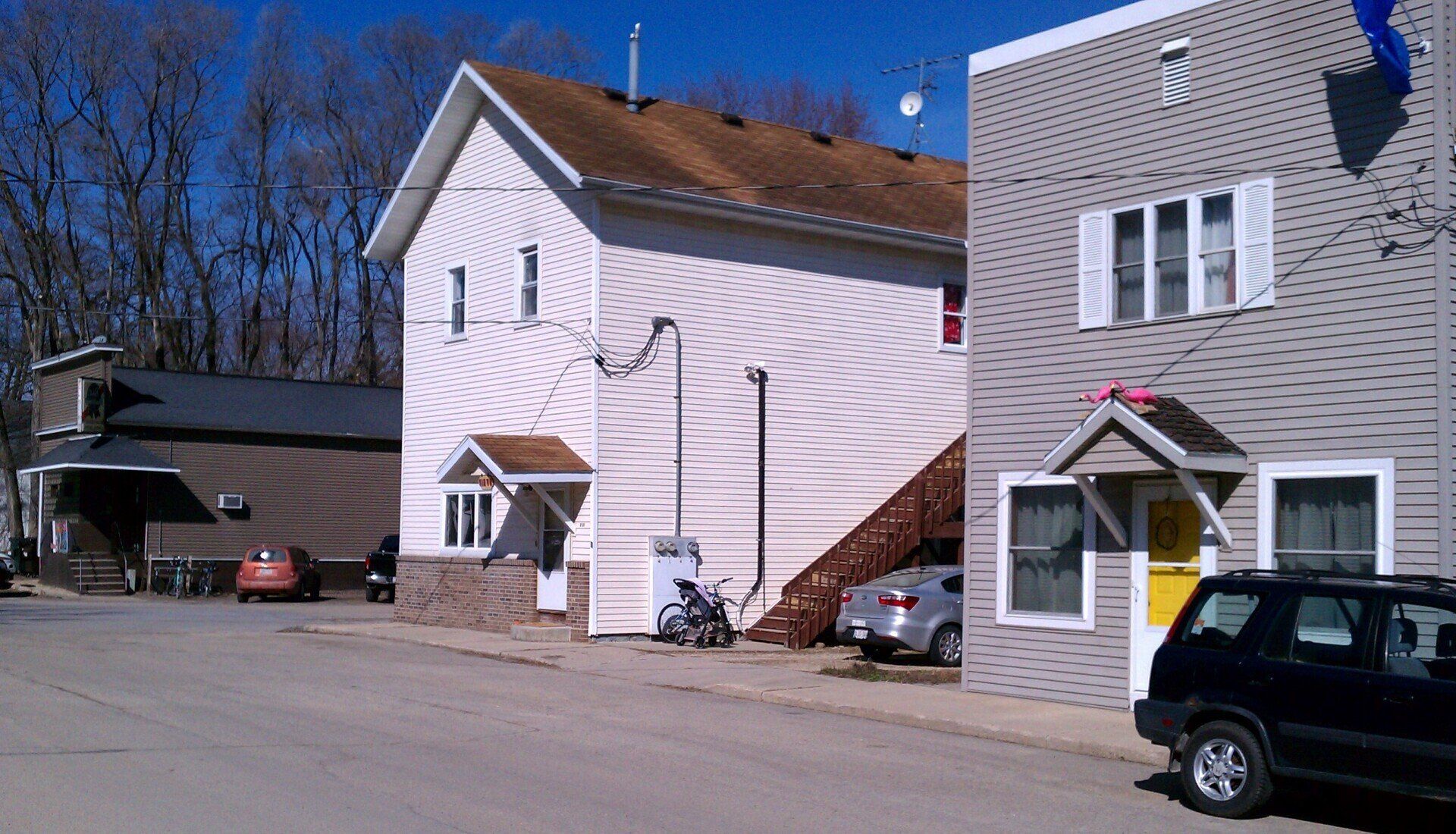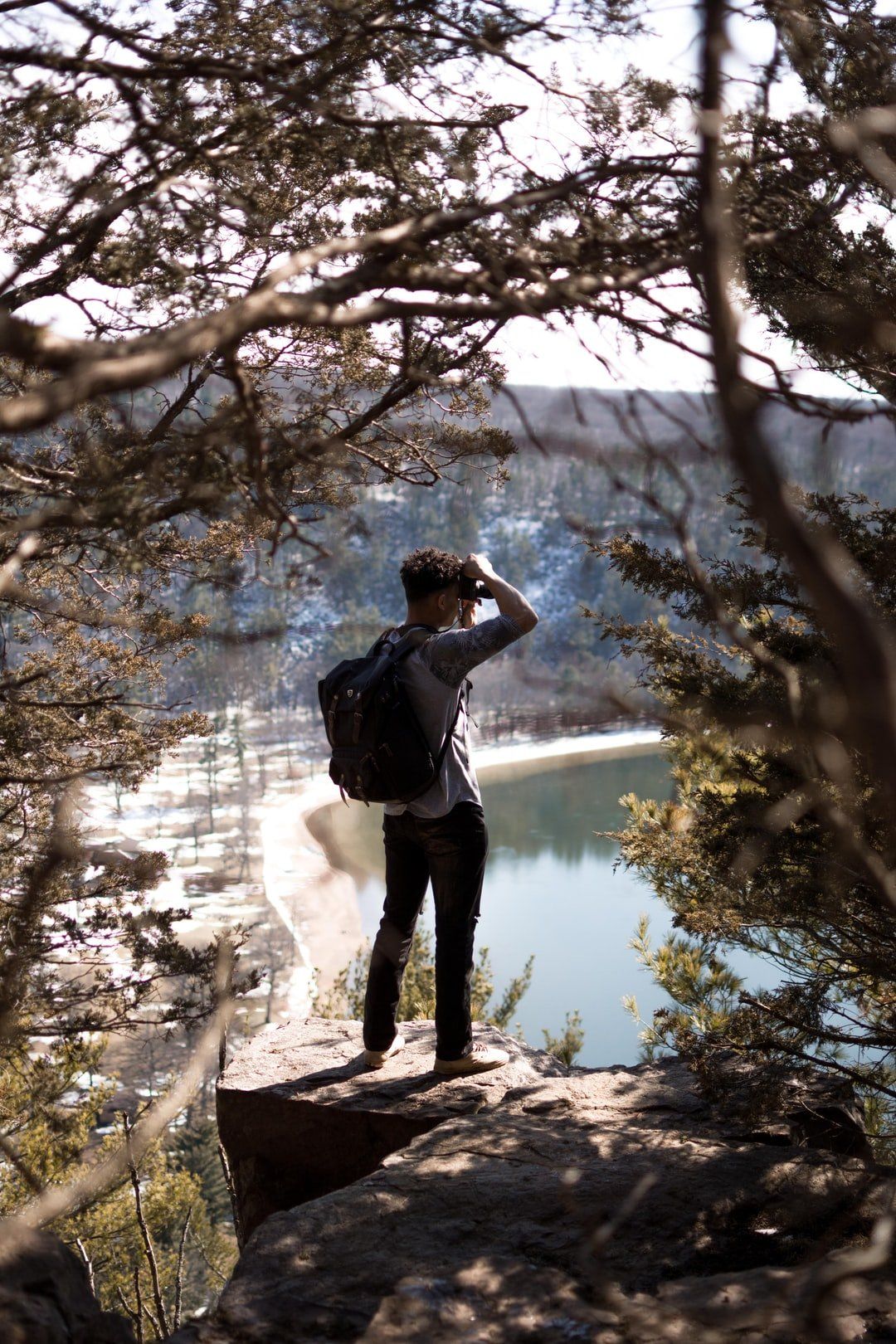Blog Post
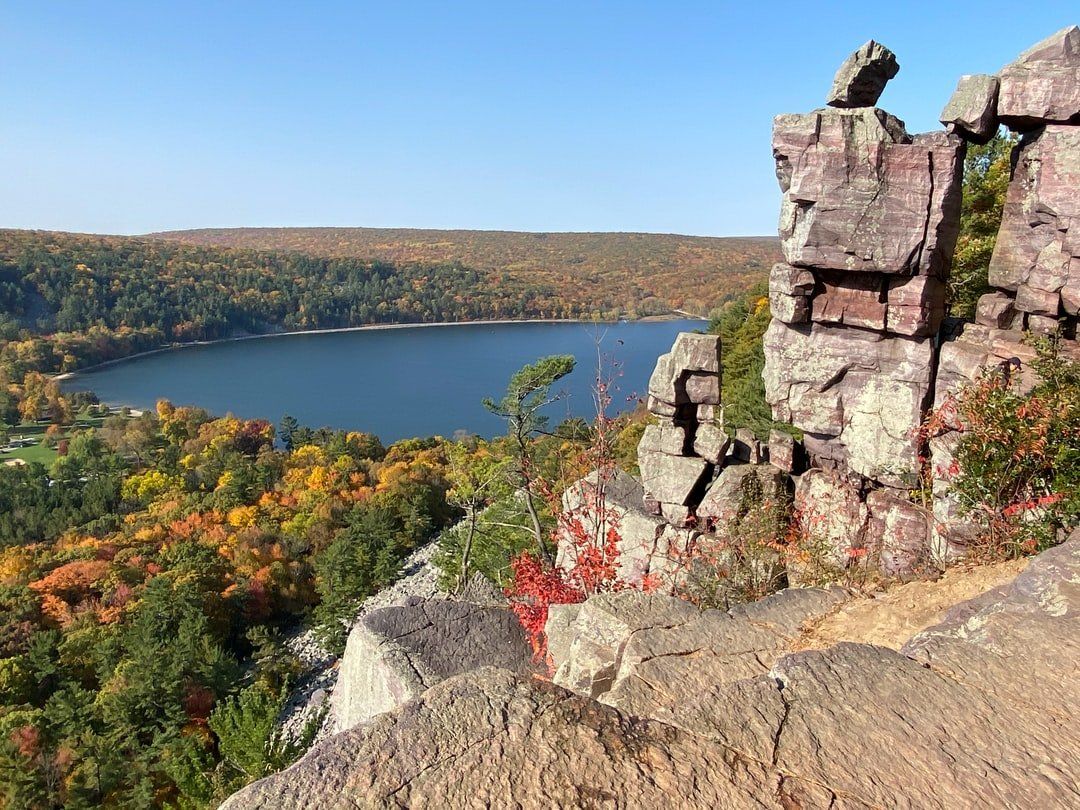
By Web Content Manager
•
14 Jun, 2021
Pictured above is Devils' Lake State Park Another sign that normalcy has returned to the Summer vacationing season in Wisconsin, the DNR announces on June 1st a number of changes to its' operations across the state. As the number of daily cases of COVID-19 in the Badger State continues to decline and the number of vaccinated Wisconsinites rises DNR officials are now allowing indoor group camps, with both indoor and outdoor camps returning to their capacity of 350. State park properties and State Natural Areas (SNA) which were closed last summer and now open incliude: Gibraltor Rock, Pewitt's Nest, Dells on the Wisconsin River, and the popular Rock Island State Park. Also, in time for Summer all enclosed shelters are now open, as well as playgrounds and towers such as Lapham Peak State Park and Peninsula State Park. Open air shelters and amphitheaters can have maximum capacity or 350 people, as well o utdoor-only concession activities. However, visitor centers, office buildings, and nature centers remain closed until further notice. Some state park, drive-up windows may be open for admission purchases. If you are not sure where facilities are open or closed you can now visit DNR service centers Fitchburg, Green Bay, Madison and Spooner to purchase a state park sticker or fishing license. The DNR assures that it will continue to operate with safety in mind for all visitors and staff based on the Badger Bounce Back Plan COVID-19 precautions such as encouraging social distancing, and park capacities are still in place. The DNR recommends visitors enjoy parks at off-peak times or other properties less popular. State parks that are subject to capacity limits include: o Copper Falls o Devil's Lake o Governor Dodge o Governor Nelson o Harrington Beach o Hartman Creek o High Cliff o Interstate o Kinnickinnic o Kettle Moraine Southern Unit o Lapham Peak o Perrot o Rib Mountain o Roche-a-Cri o Whitefish Dunes o Willow River The Wisconsin Department of Natural Resources recommends you visit those natural areas listed above during non-peak hours before 10 a.m. and after 4 p.m. According to the DNR "The majority of Wisconsin Department of Natural Resources properties are open, with special conditions to help limit the spread of COVID-19 and protect natural resources."

By Web Content Manager
•
22 Apr, 2021
" O ur goal is not just an environment of clean air and water and scenic beauty. The objective is an environment of decency, quality and mutual respect for all other human beings and all other living creatures," Wisconsin's "conservation governor" Gaylord Nelson said of Earth Day the worldwide event he had founded. On April 22, 1970 the first Earth Day was celebrated by over 20 million Americans. The event brought communities across the country together to support the environment. Today, Earth Day is celebrating its' 51st year and while the mission is the same the message is more clarion and dire than ever before. But in this media landscape of doom and gloom there are signs in Washington D.C. and small towns across the U.S. that people finally understand what Gaylord Nelson's Earth Day truly is. This single day event has brought communities across the globe together to think sustainably, plant trees, save rain forests, prairie and wetlands and foster meaningful legislative action from the world's largest economies to those countries less economically blessed in the global south facing the constant threat of climate change every day. The United Nations Climate Change Conference which will hold COPP 26 in Glasgow this November owes a great deal to Wisconsin's very own, the man from Clear Lake, Gaylord Nelson. In the age of the internet, Earth Day is not only a one day worldwide celebration but a dedicated website https://www.earthday.org/ that nurtures community connections and actions in a Social Media driven context.. The website is vast and somewhat daunting for a first time visitor. If you were fortunate enough to visit Earthday.org on Earth Day you were treated to a livestream of dignitaries and every day people speaking up for the environment and highlighting the actions their communities or organizations have taken to make this planet a healthier place for all of us to live. But the Earth Day website outside of April 22nd offers -downloadable toolkits and action plans that even a single individual can take on. There is the "Earth Challenge" which invites citizens around the globe to document point sources of pollution. The Great Global Cleanup (#GreatGlobalCleanup) encourages people to seek out groups in their community that are cleaning up trash around their neighborhoods and parks. Or you can pledge to make your next meal plant based. These are just a few Earth Day actions that you can do every day, whether your at home or on vacation use Earthday.org as your guide to live a greener, cleaner life and as U.S. Senator Gaylord Nelosn succinctly put it, "(create) an environment of decency, quality and mutual respect for all other human beings and all other living creatures."
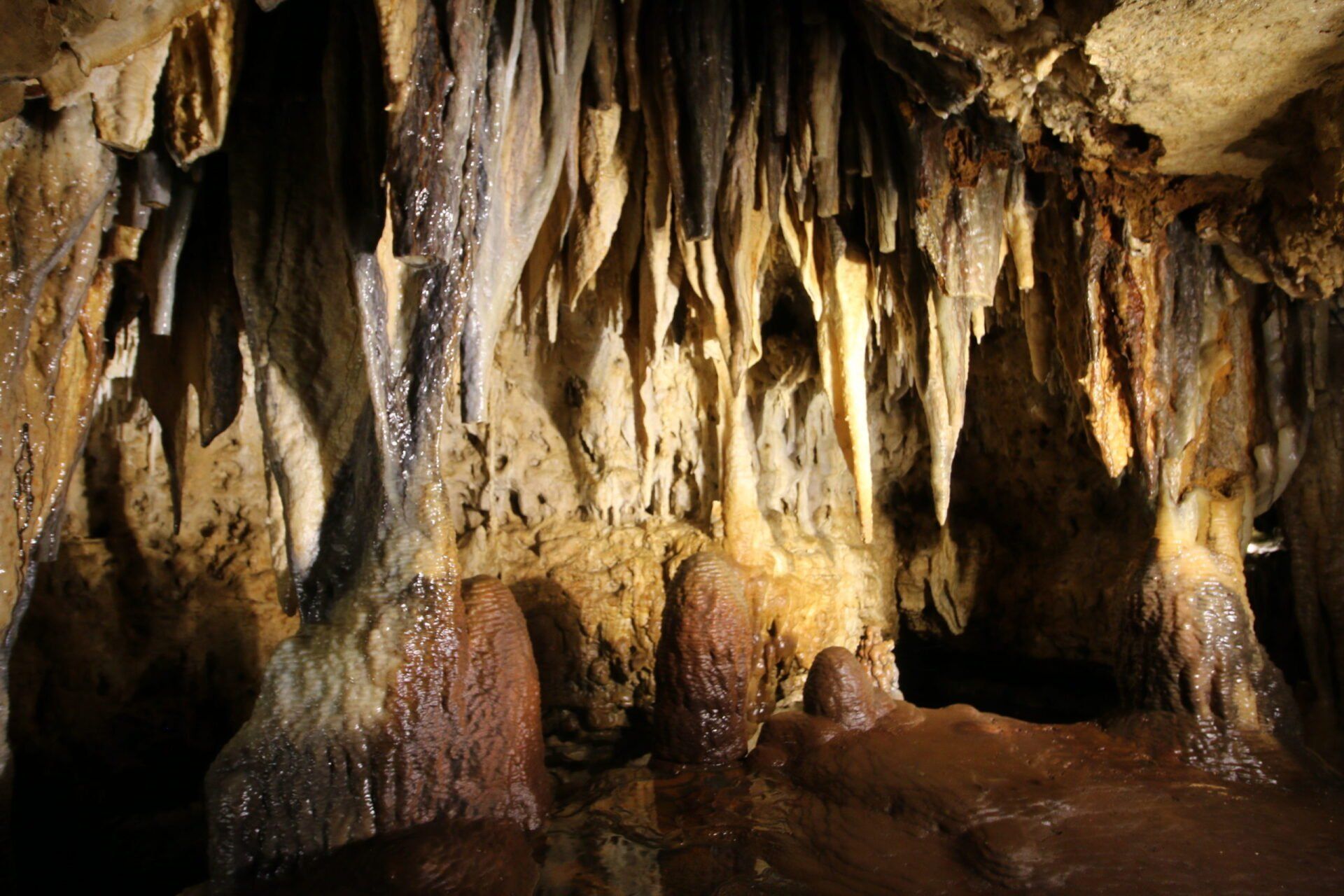
By Lakes Edition Web Content Manager
•
10 Feb, 2021
(Photos courtesy of Cave of the Mounds) Where in Wisconsin can you venture outdoors in a relatively balmy 50 F in the middle of February? The Cave of the Mounds of course.. Awe inspiring and educational this geological wonderland has all the ingredients of a great, family field trip and more. The Cave of the Mounds's designation as a National Natural Landmark by the National Park Service in 1987 recognizes the site's historic, geological and educational significance to Wisconsin and the Midwest. In these pandemic times, parents must find a balance between virtual learning and safe options for childhood learning and development outside the home. From up-close and personal moments with 400 million years of Earth history to the geological process of how Speleothems like stalactites and stalagmites are formed, the Cave of the Mounds truly lives up to their nickname "Wisconsin's Oldest Classroom." The cave staff also provides a number of science experiments and curriculum's to meet the inquisitiveness of any budding earth scientist or geologist. Kids can crack open a geode, or sift sand for gemstones on site or download one of many, educational activities from the Cave of the Mounds' website . The COVID-19 pandemic has brought new challenges to all of us as we navigate our family's lives with their safety and health at the forefront. The Cave of the Mounds, in accordance with Dane County's COVID-19 guidelines, has put a number of new safety measures in place for their visitors and staff. Gone is the traditional tour with a guide, unless you reserve a VIP package online or in person. The Blue Mounds' area cave like Mammoth Cave National Park has implemented self-guided tours to better manage group sizes for social distancing. Additionally, the cave has added back lit signs to highlight educational moments along the route to help guide the self-paced tours. The cave's tour route is configured in a one-way loop to control foot traffic, and guides are now stationed at two locations in the cave to answer all questions.. Other facility-wide safety measures at the cave include hand sanitizing stations, frequent cleaning of all railings, door handles, cash registers and credit card pads. Mask wearing is mandatory for all staff and visitors both in the gift shop and the cave itself. "We have received lots of calls from visitors pointedly approving what precautions we have taken," says Jan Okeson, Operations Manager at Cave of the Mounds. Okeson also noted for the most part visitors have complied with mask wearing requirements and that only a handful of Instagramers posing for selfies have taken off their masks while inside the cave. Fortunately, there are cave guides stationed throughout the 1/2 mile tour so that help is always nearby. Lastly, if you want to have "Wisconsin's oldest classroom" all to yourself Okeson recommends visiting Tuesdays through Thursdays which tend to be the slowest days of the week. If you visit remember to mask up, maintain your social distance of 6 feet at all times. Take care and stay safe! HOURS Weekdays: 9 am to 5 pm Last tour entry at 4 pm Weekends: 9 am to 5 pm Last tour entry at 4 pm CONTACT Phone: 608-437-3038 DIRECTIONS From Madison exit 258 off the Beltline (Hwy 12/18.) to merge onto to Hwy 18W/151S. Take Hwy. 151 south for 25 miles and exit onto Cave of the Mounds Road. The Cave of the Mounds is located at 2975 Cave of the Mounds Road. 511 Wisconsin For up to the minute winter driving conditions in southern Wisconsin visit the Wisconsin DOT's 511 Wisconsin or call 511 or (866) 511-9472.
As the pandemic grinds on, the Northwoods beckons many seeking solitude, natural social distancing
MINOCQUA - While swarms of summer vacationers enjoyed one last fling before heading back to the city and the stifling realities of the pandemic, Chicago actors Jared Davis and Kat Bramley were moving into their new home in the Northwoods.
The young couple love the outdoors and figured it was time for a fresh start as Chicago’s theater scene was shut down by COVID-19 restrictions, leaving them unemployed in an expensive city.
"We have an opportunity to make a big change right now, because everything is changing, so we might as well go with the flow," Davis said.
Other folks have also been moving north because of the pandemic. Most are working remotely, unfettered by where they live, provided they have a robust internet connection for videoconferences and other office tasks.
Kathy Schmitz, executive director of the Vilas County Economic Development Corp., says she's been getting calls every week from people wanting out of cities because of COVID-19, social unrest and a craving for the outdoors. Some have vacation homes in the area, heavily forested with more than 1,300 lakes, and would extend their stay another couple of months or even year-round if they could work remotely.
"We've shown them they can do it," Schmitz says.
The fallout from coronavirus could be a stimulus of sorts for rural Wisconsin as young people, mid-career professionals and retirees look for ways to exit congested cities.
“I hate to say that COVID has brought us an opportunity, but there is a theory in business that you never let a crisis go to waste,” said Daniel Smith, president and CEO of Cooperative Network, an association representing agriculture, utilities, health care and other business sectors in Wisconsin and Minnesota.
For sure, rural communities have felt their share of the pain that's been inflicted on small businesses, schools and public gatherings. "None of us have been spared," Smith said.
But through late summer, demand for land and homes surged in the Northwoods — with a 36% increase in lakefront property sales in an area covering seven counties.
"It mirrors the lifestyle people want today ... you can be on your dock having coffee while making calls and working remotely on your laptop," Schmitz said.
For Davis and Bramley, the loss of theater work was incentive to leave Chicago. Bramley was familiar with the Northwoods from her childhood summers at Clearwater Camp for Girls. She and Davis were married in Minocqua and have family in the area.
Davis landed a job as a caretaker at Clearwater, enabling the exit from the city. For the price of their one-bedroom apartment in the Rogers Park neighborhood of Chicago, he and Bramley now have a spacious three-bedroom place in Eagle River.
They're looking forward to learning new skills like ice fishing.
"It had always been a long-term plan for us to get out of the city," Bramley said.
Some folks have come to the Northwoods from Texas, California and other states hard hit by COVID-19. Many have owned vacation homes in the area for years.
Since July, Carol Marshall has been working remotely from a cabin on Catfish Lake in Eagle River. She's in the dialysis-department medical records unit of Texas Children’s Hospital in Houston.
Marshall has lived overseas and in five states, but her family has kept a cabin on Catfish Lake for more than a century since her grandfather from Chicago started coming to the area for fishing in the early 1900s. She and her family have spent countless summers on the lake, a respite from living in big cities.
“Good memories,” she says.
So when the pandemic heated up in Houston and Marshall was working from home anyway, she and her husband Bob sold their house and headed north to the place they loved the most. They stopped as little as possible in the two-day road trip, wanting to minimize their exposure to the virus.
“When we left Houston, it was getting worse. Yes, I was concerned," Marshall said. "I was also concerned that people like me would be bringing COVID to my dear Eagle River home, so we have been very careful while we are here as well."
They were joined by family members from Seattle and Washington, D.C., now working or attending college remotely from Eagle River.
Looking across Catfish Lake from the dock at her cabin, Marshall can see the place her grandparents owned. She and Bob, who is retired, love hiking, canoeing and hanging out with their neighbors on the patio — sometimes wearing a mask, sometimes not.
“It’s not that we were running away from Houston; we were running towards the beautiful trees, the quiet lakes and the ability to do things outdoors,” Carol said.
Before year’s end, she’s supposed to return to the office in Houston. It will be a pivotal decision in her life, having already moved 20 times in 60 years.
“So, I will have that discussion with them about whether I can continue to work full time from up here or whether other arrangements have to be made,” she said.
Jared Davis and Kat Bramley take a break from moving into their new home in Eagle River. The actors are starting over after the already competitive acting market in Chicago crashed after COVID-19.
Mark Hoffman / Milwaukee Journal Sentinel
Brad and Rubie Gauthier moved to Minocqua from Portland, Oregon, in 2016.
They live on 8 acres surrounded by miles of paved bicycle paths. They can take long walks through the forest without bumping into anyone, an automatic kind of social distancing, and have cross-country skiing at their back door.
“What’s really crazy is that tourists will pay thousands of dollars to be in this area for a week, while we get to live here,” Brad Gauthier said.
He grew up on the Lac du Flambeau Indian Reservation, and when living on the West Coast, wanted to return to the Northwoods. Rubie Gauthier was raised in the Philippines. She traveled extensively as an executive with technology giant Hewlett Packard before she met Brad in Portland.
Brad and Rubie Gauthier with their 10-month-old daughter in Minocqua. They are the owners of Sitecast, a national website design firm in Minocqua. They formerly lived in Portland, Oregon.
Mark Hoffman / Milwaukee Journal Sentinel
For a while, the young couple ran their software development business from laptops while touring the U.S. National Park System. Their customers never knew the difference, and many now probably don’t realize they're in the Northwoods.
In Portland, they paid $32 a square foot for office space. In Minocqua, where they now have their company, the rent is about a dollar a square foot.
“And we do the exact same thing here,” Brad said.
Dustin and Amanda Hoeft are shown with their children from left; Brody, 11, Tenley, 9, Tayah, 5, and Landyn, 14, and their dog, Bentley, shortly after moving into their home Sept. 2 in rural Eagle River. The Hoefts now have nearly 5 acres of woods, just steps away from their front door, for their active family to hunt and fish.
Mark Hoffman / Milwaukee Journal Sentinel
Dustin and Amanda Hoeft recently moved to Eagle River from Waukesha County. They were looking for land, which had become too expensive where they lived, and a place to enjoy hunting and fishing with their four children.
“It’s nice up here. The pace is so much more relaxed,” Dustin Hoeft said.
Earlier this year, Lizeth and Will Schattner left their home in San Diego for a new life in the Northwoods.
Will was able to keep his job from San Diego, designing structures that house data systems, and works from home.
Lizeth, an esthetician, received her license to open a beauty spa in Eagle River the same day the state ordered all spas closed because of COVID-19. She's since been able to open and now has a thriving business.
They moved here to be closer to Will's family and feel fortunate to have left California before things worsened in the pandemic.
"I wouldn't have been able to work there, even now," Lizeth said.
Negative consequences
While some parts of rural America have experienced growth since COVID-19 struck, big cities have seen empty office buildings and a slowdown in construction of high-density housing.
In a Harris Poll of 2,050 U.S. adults, nearly one-third said they considered moving to a less densely populated area because of the pandemic. Eighteen-to-34-year-olds were more likely than other age groups to be in that category.
“Already beset by high rents and clogged streets, the virus is now forcing urbanites to consider social distancing as a lifestyle,” Harris Poll CEO John Gerzema said in a news release this spring.
The pandemic has fueled a move to the suburbs as well as rural communities.
“After witnessing several consecutive years of urban revival, the new trend looks to be in the suburbs as more companies allow greater flexibility to work from home,” Lawrence Yun, chief economist for the National Association of Realtors, said in a statement.
In the long run, companies may still want most workers in the office at least some of the time to promote collaboration and morale.
“Zoom meetings are OK for a while, but they don’t have the same effect,” said Scott Bush, vice president of operations for the Greater Milwaukee Association of Realtors.
Yet cities are struggling to provide essential services as tax revenue plummets during the pandemic. And as more people leave, it’s reminiscent of white flight that went on for decades.
“Right now, the vast majority of who is moving is the white middle-to-upper-class people who can afford to buy a new house or have remote careers. You now end up having more segregation by both race and class,” said Roberta Coles, a Marquette University sociology professor.
The movement of people from cities to rural areas has triggered concerns about the spread of coronavirus in small towns with limited medical facilities.
Earlier this year, counties including Vilas and Oneida issued travel advisories discouraging visits from people who own second homes. But after the governor's safer-at-home order was lifted in late May, those folks and many others hitched up their trailers, loaded up kayaks and bicycles, and headed north.
As some predicted, the influx of visitors corresponded with a spike in COVID-19 cases. For a couple of weeks in August, northern counties were diagnosing new cases at a rate similar to the rest of the state, around 13 or 14 new cases per day per 100,000 residents.
A pivotal moment in history
But the migration of city dwellers to rural communities could be a lifeline for small towns beset with an older population, school closings and other signs of the loss of youth.
Bayfield County is projected to lose 28% of its child population by 2040. Pepin County, 25%; Price County, 20%, according to the Applied Population Laboratory at University of Wisconsin-Madison.
"Those communities that lose too much of their youth population are in danger of becoming unsustainable," the university said.
Between 2010 and 2015, the number of children in Wisconsin declined by 42,000, from 1.34 million to 1.30 million, down 3.2%. The decline was most severe in the northern part of the state.
But while many rural towns lose young people during their college years, they get them back as young adults marry and begin raising children, said Ben Winchester, a senior research fellow for University of Minnesota-Extension.
"Census data shows that many return, often in their 30s and 40s, and they come with college degrees, work experience, professional contacts and children," Winchester said.
"Some lifetime city dwellers move to rural areas, too. They are eager to make a new life in a rural community," he added.
Brittany Beyer, executive director of the Grow North Regional Economic Development Corp., is shown at Nicolet Area Technical College in Rhinelander. She moved to the Northwoods from New York City a few years ago.
Mark Hoffman / Milwaukee Journal Sentinel
From the Big Apple to Rhinelander
Brittany Beyer, executive director of the Grow North Regional Economic Development Corp., could be counted in that crowd. Born and raised in the Chicago suburbs, she lived in New York for 18 years before moving to Rhinelander in 2016 with her husband, who had family in the area.
Her previous career was in education and dance.
"I obviously miss certain things about living in New York City. ... Oh, my gosh, I miss bagels, Thai food and some of those cultural experiences. ... But I'm fine and thriving," she said.
Beyer says she's seen vacation homes in the Northwoods become "COVID pads" for people seeking refuge from crowded cities.
"We offer almost a respite from so many things," she said. "Yes, social unrest. Yes, being too tight with other people."
Jim Tuckwell, shown in Eagle River, is chairman of the Vilas County Economic Development Corp.
Mark Hoffman / Milwaukee Journal Sentinel
Even when the pandemic's over, most people will want the choice of working remotely, according to multiple surveys of the American workforce.
"The pandemic forced people to do something they had never thought of before, and they found that it worked," said Jim Tuckwell, chairman of the Vilas County Economic Development Board and a retired IBM executive.
That's likely to bode well for the Northwoods.
"People have discovered they can live where they want to instead of where they have to because of a job," Tuckwell said.
About this story
Rick Barrett of the Milwaukee Journal Sentinel is examining the loss of youth in rural Wisconsin, and related topics, during a nine-month O’Brien Fellowship in Public Service Journalism at Marquette University.
He is being assisted by O'Brien interns Chris Miller and Kelli Arseneau. These stories are being done in conjunction with the Milwaukee Journal Sentinel and the USA TODAY NETWORK-Wisconsin.
Marquette University and administrators of the program played no role in the reporting, editing or presentation of this project.
Post courtesy of Milwaukee Journal-Sentinel
First Published Sep 18, 2020
Share
Tweet
Share
Mail

“We had the very best trip of our lives, and are so happy we chose the Wisconsin Southern Lakes area. The scenery was outstanding, the facilities were clean and well kept. We will definitely come back, and recommend to our friends.”
Julia M
Button
“What a vacation. We had planned to come for a weekend, but extended our stay for an entire week. It was the best camping vacation we’ve ever had.”
Tony W
Button
“I’m a photographer, and this park contained everything I could have asked for. Gorgeous sunsets, incredible views, and lots of wildlife.”
Lily S
Button



